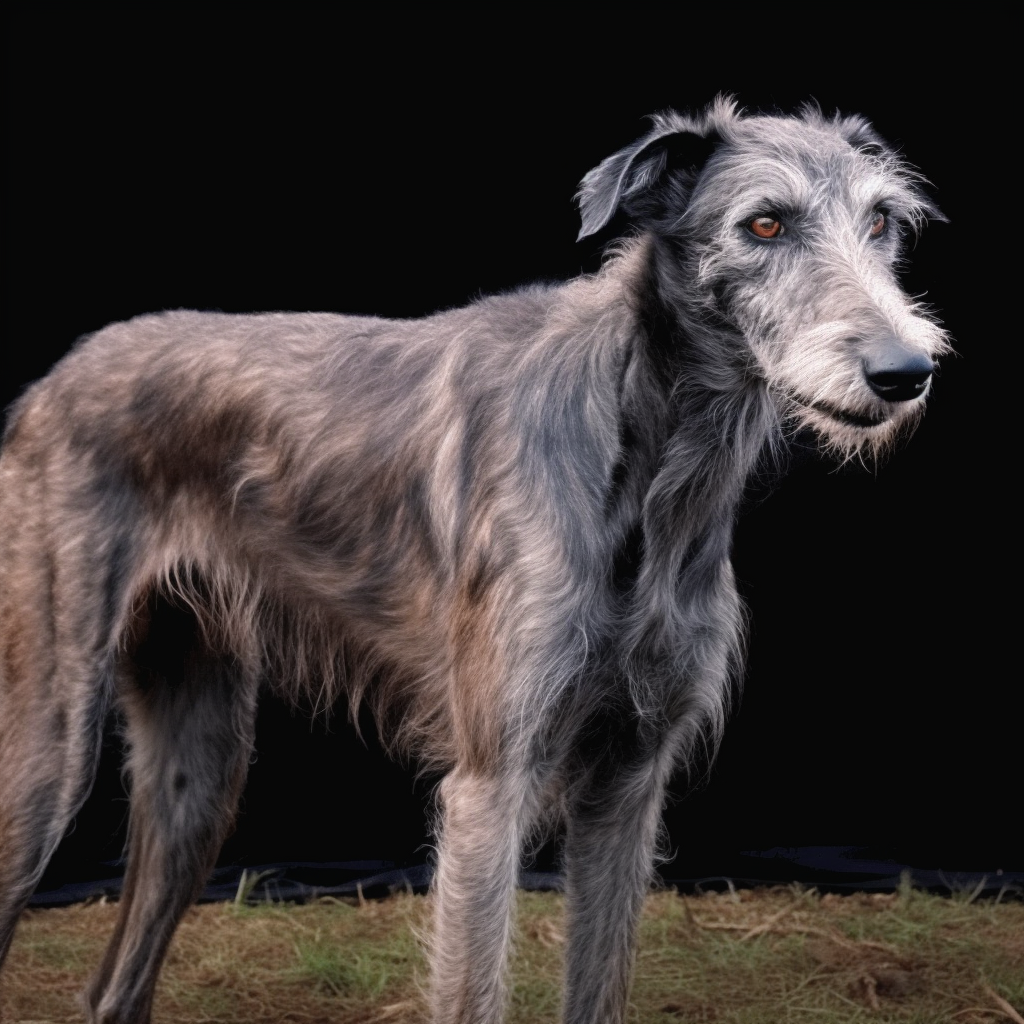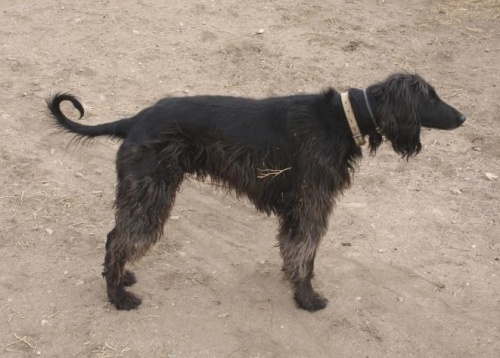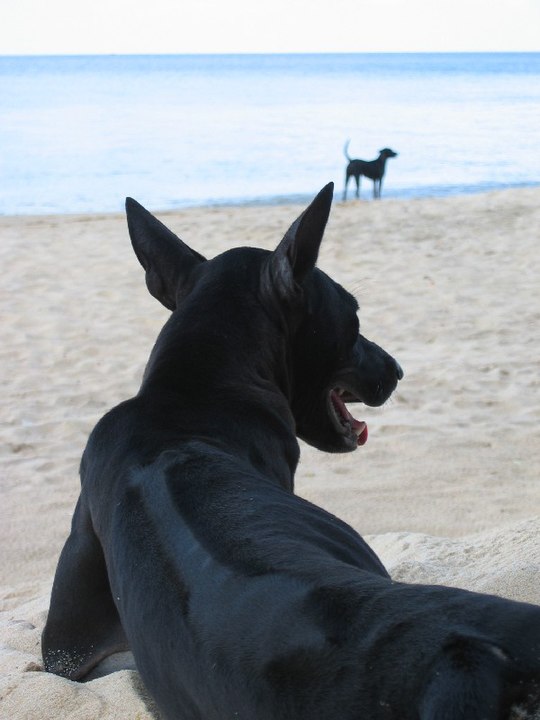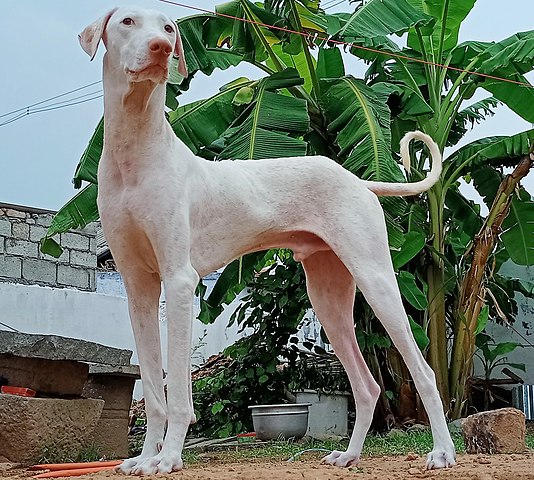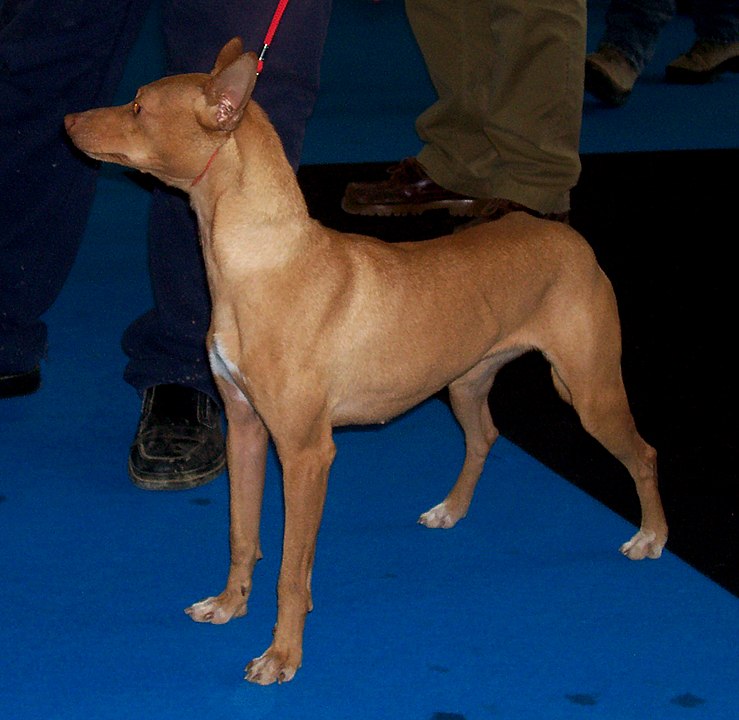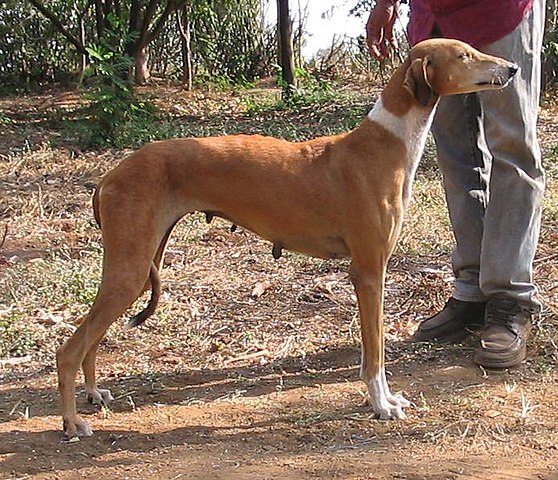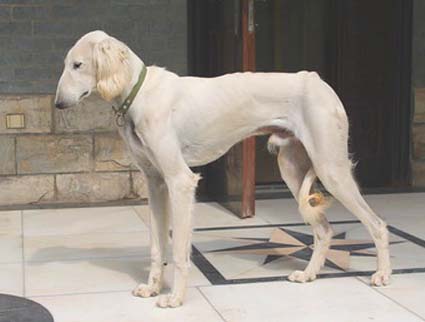The Cursinu (AKA the Corsican Dog) has been around since the 16th century. Originating on the island of Corsica, the Cursinu was used to herd and guard flocks, in addition to being used as a hunting dog and a guard dog for the home. This is a primitive-type breed that has faced extinction in the past due to the modernization of farming, however several clubs and interested parties are currently working to keep the breed from dying out. In the process, the breed managed to become recognized by the French Kennel Club in 2003 and currently as of today, there are over 2200 dogs recorded by the breed’s parent club in France. This relatively unknown, yet distinctively versatile breed is most often used in wild boar hunting today and is still able to handle a vast number of jobs given to it.
The Cursinu is described as a rustic country dog. The breed is active and very capable of adapting to a limitless number of jobs and tasks, particularly hunting. He is loyal and devoted to his owner and is as good of a companion as he is a reliable worker, but he does need lots of exercise – both physical as well as mental! Long walks or jogs every day would be a good start, in addition to more interesting and engaging forms of exercise. Unsurprisingly because of his background, he requires an owner who can give him jobs that provide plenty of physical and mental outlets. He would be most at home with an owner who can let him herd livestock or hunt, but could also benefit from dog sports such as tracking, rally or agility. The breed is said to be hyperactive until about the age of 1, after which point he tends to “settle” into… a fairly energetic dog!
The Cursinu is wary around strangers but generally docile and affectionate with those whom he knows. His alert nature, territorial disposition, and tendency to bark when he feels something is wrong makes the Cursinu a good watchdog and even guard dog. He can be protective of his owners if he feels they are in danger. He is gentle with children and can get along with cats when socialized to them early. With other dogs he is usually polite yet reserved. Although he’s great with most animals, small pocket pets may be in danger if they are left to wander the home un-caged because of this breed’s high prey drive. This prey drive also makes him more likely to wander so a fenced yard is definitely recommended!
The Cursinu is a very healthy breed in general with no health issues regularly seen, and an average lifespan of 12-15 years. He can adapt to any type of weather and is able to live either inside or outside. Many owners find that the breed requires only very infrequent visits to the vet and is quite low-maintenance in terms of health care. Grooming is also considered low-maintenance as he requires only an easy weekly brushing and the occasional bath. Nail trimming, dental care, and ear cleaning should also be added to the schedule but is easy enough to complete. Shedding is fairly low all year round, with slightly more hair loss twice a year.
The Cursinu is intelligent yet independent, and often requires more training than other breeds because of this independence. He also has a stubborn nature combined with a strong prey drive meaning that an owner/trainer must be patient when working him around highly distractible situations. With a strong personality and an often willful nature, an owner needs to be firm with this breed while remaining fair. Furthermore, without enough physical and mental stimulation (AKA training) the Cursinu can be destructive. Just one more reason that training is a necessity!
The Cursinu is a medium-sized dog with either a short or mid-length coat – the latter which often comes with fringes. The color is most often brindle in a variety of different shades. The ears are either hanging or rose shaped, but always triangular. The muzzle is shaped like a truncated pyramid and relatively thin. The tail is long, thick and well supplied with hair. At rest the tail can either hang low or be curled up onto the back.

Photo By Küchenkraut

